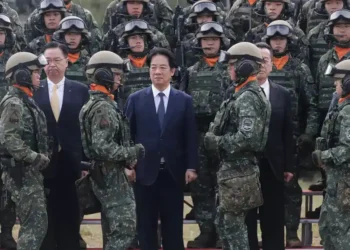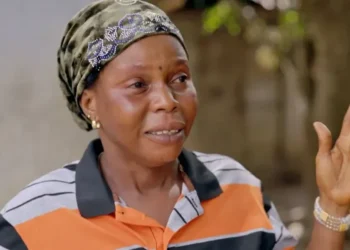Japan’s Largest Yakuza Group Vows to End Decade-Long Turf War Amid Declining Membership and Rising Police Crackdowns
Japan’s largest yakuza syndicate, the Yamaguchi-gumi, has made a significant pledge to end its long-standing feud with a rival faction. In an unprecedented move, three senior members of the Yamaguchi-gumi visited the Hyogo Prefectural Police headquarters on Monday, where they handed over a letter promising to halt all internal fighting and refrain from causing further “trouble,” according to authorities.
This announcement marks a potential shift in the violent history between the Yamaguchi-gumi and its rival group, the Kobe Yamaguchi-gumi. The two factions have been embroiled in a brutal conflict since 2015, when the Kobe Yamaguchi-gumi splintered off from the Yamaguchi-gumi, leading to years of bloody clashes. The violence has often spilled into the streets of central and western Japan, leaving gang members gunned down or stabbed in dozens of incidents, putting immense pressure on law enforcement.
The Yamaguchi-gumi, one of the world’s wealthiest and most powerful criminal organizations, is facing increasing challenges, not just from rival gangs, but also from relentless crackdowns by authorities. In 2020, police officially designated the Yamaguchi-gumi and its breakaway faction as “gangs at war,” granting officers greater authority to surveil and restrict their activities. These measures include prohibiting the groups from using their offices and blocking their ability to raise funds.
Though the pledge to end the internal fighting comes from the Yamaguchi-gumi, it remains unclear how the Kobe Yamaguchi-gumi will respond. Police are closely monitoring both factions to ensure the ceasefire holds, though it’s uncertain if this declaration will be one-sided.
The move reflects broader changes within Japan’s criminal underworld, where membership in traditional yakuza groups has been steadily declining. Official police data from 2024 shows that the number of yakuza members across Japan has dropped to 18,800, a record low, and below the 20,000 mark for the first time. In particular, the Yamaguchi-gumi’s membership has almost halved in the last decade, falling from 6,000 in 2014 to just 3,300 by the end of last year. Meanwhile, the Kobe Yamaguchi-gumi reportedly had only 120 active members.
This decline in yakuza membership is being matched by a troubling rise in a new form of criminal activity—“tokuryu” gangs. These gangs, which operate outside the traditional yakuza structure, are often anonymous, consisting of individual criminals or ad hoc groups. Police investigations have linked tokuryu gangs to violent robberies in Tokyo and a growing number of fraudulent activities, including romance scams and investment fraud schemes on social media.
As the yakuza’s grip on organized crime weakens, authorities are grappling with the complexities of this evolving criminal landscape. While the Yamaguchi-gumi’s pledge to end its feud is a significant development, the growing presence of tokuryu gangs may pose an even greater challenge for law enforcement in the years to come.
This article was rewritten by JournosNews.com based on verified reporting from trusted sources. The content has been independently reviewed, fact-checked, and edited for accuracy, neutrality, tone, and global readability in accordance with Google News and AdSense standards.
All opinions, quotes, or statements from contributors, experts, or sourced organizations do not necessarily reflect the views of JournosNews.com. JournosNews.com maintains full editorial independence from any external funders, sponsors, or organizations.
Stay informed with JournosNews.com — your trusted source for verified global reporting and in-depth analysis. Follow us on Google News, BlueSky, and X for real-time updates.














